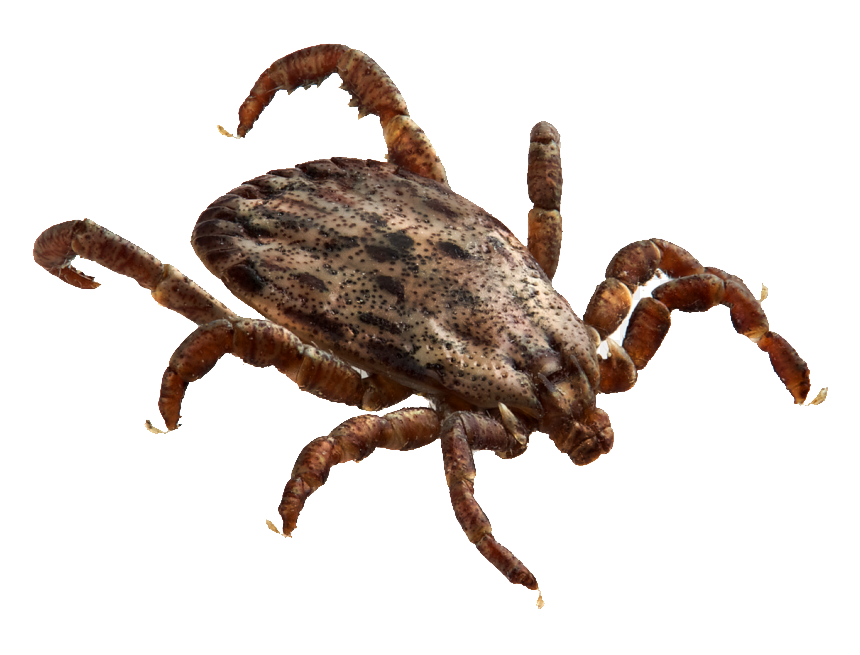With over 850 species of ticks found all over the world the most common tick species found in Canada are the black-legged tick aka the deer tick, the brown dog tick, American dog tick, and the Rocky Mountain wood tick.
SIZE: Ticks range in size from the small size of a sesame seed all the way to the size of a pea. Once fully fed they can appear almost the size of a grape.
DESCRIPTION: Ticks are usually misidentified as insects rather they are arthropods due to the fact that they only have 2 segmented body regions rather than 3 and can grow 8 legs rather than 6 and unlike other insects, ticks heads are attached to their body which doesn’t allow them to move their head freely. Ticks can range from all sorts of colors like browns, blacks, and also grey and white.

BEHAVIOR: Ticks are bloodsucking ectoparasite that connect themselves to a host and once they finish feeding off the host they detach themselves and lay their eggs. Ticks require a feeding of blood at stage in their life in order to grow especially for the female tick as she must engorge herself with blood to create the huge number of eggs she lays. In spite of the enormous number of eggs created, just a little rate will make it to development. Once a tick laches on to a host it does not entire its entire head into the host rather just its mouth to keep from blood clotting and also releases an anti-clogging agent as a preventative measure. During feeding ticks may inject bacterium into the body which can cause Lyme dieses and other pathogens. Ticks can go unnoticed for long periods of time due to their small size and depending on where they have latched on to the body, this increasing the chances of disease transmission. Unfortunately, the most common tick “blacklegged tick” are the primary species that carry lyme disease and also other diseases like anaplasmosis, Babesiosis and Ehrlichiosis. Studies have down that 90% of ticks can be infected with burgdorferi.
HABITATS: Ticks are mainly found outdoors and rarely indoors unless a pet or other host has brought them inside. Most species of ticks that are found in Canada are usually found in wooded areas or fields where there is a lot of wildlife such as deer, rodents, and other mammals. Some areas are listed in for high tick infested areas such as areas like Brampton, Mississauga, Toronto all have areas where the tick population is high. Each tick latches on to a host in different ways for example some ticks move from the first host to the second all throughout their life cycles and different development stages and some tick will wait for a host to come by climbing on to the tip of grass and jumping on to a host as they walk by while some ticks wait for a host to brush on by them so that they can latch on. As for rocky mountain ticks they differ from the other ticks due to the fact they live on high altitudes and rely on stimuli from the environment like change in humidity, temperature or carbon dioxide levels to determine if a host is present.
TIPS FOR CONTROL
Once ticks enter the home they can be very difficult to control which is why it is always a good idea to call the professionals to handle a tick infestation. It is also important to get the exterior of your home sprayed for tick especially in shaded areas where they are mostly found. The best ways to prevent a tick infestation from happening are listed below:
How to remove a tick?
How does a tick bite look like?
Tick bites are not hard to spot especially since the tick can stay latched on to the skin for 10 days. Tick bites look like a red dot and can have a ring around it that develop into a rash. If you experience muscle stiffness, joint pains, headaches, nausea, fever or weakness see your physician.